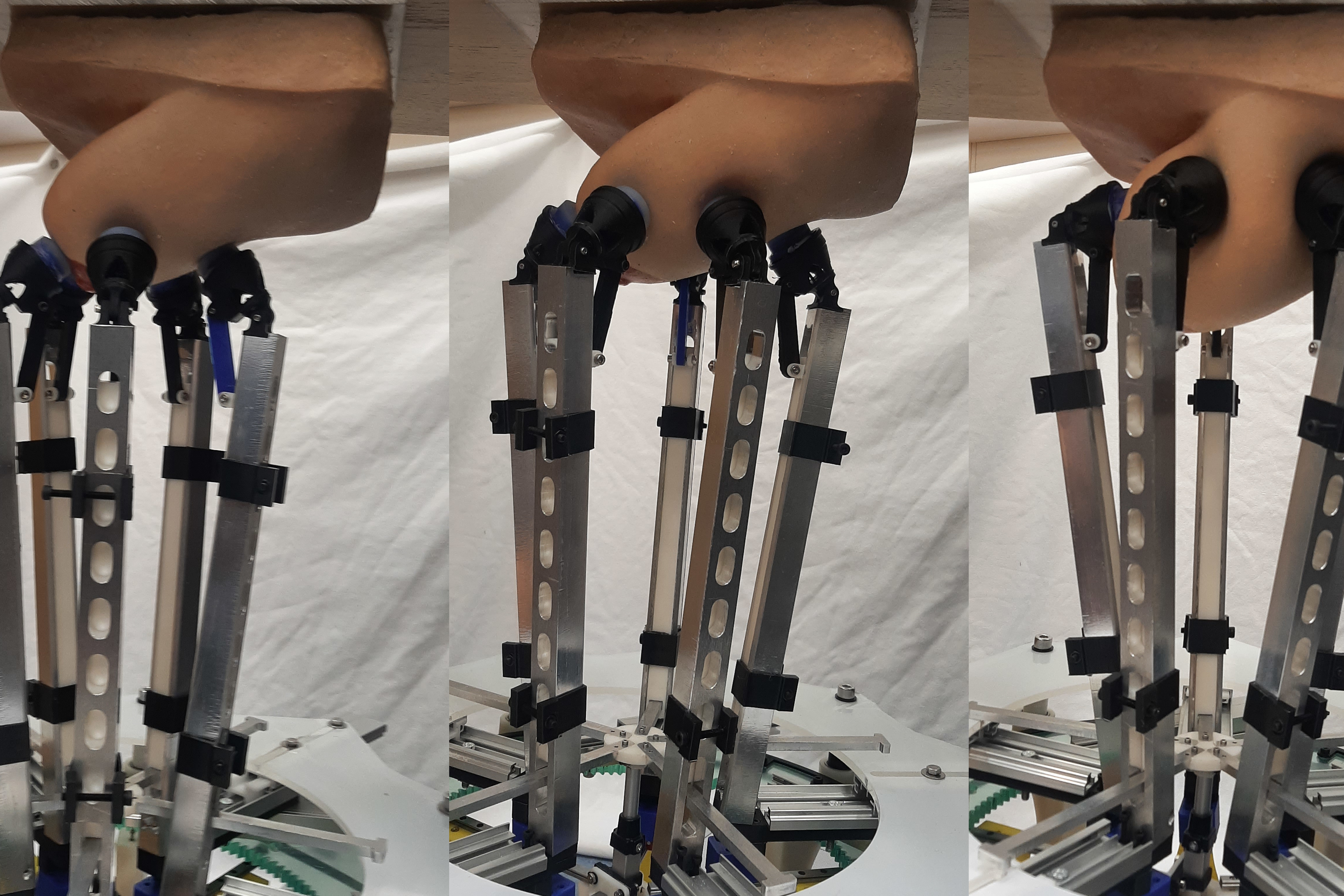New robot could help diagnose breast cancer early and ‘revolutionise’ checks
The robot can detect lumps at large depths and apply human-like forces with precision using sensor technology.

Your support helps us to tell the story
From reproductive rights to climate change to Big Tech, The Independent is on the ground when the story is developing. Whether it's investigating the financials of Elon Musk's pro-Trump PAC or producing our latest documentary, 'The A Word', which shines a light on the American women fighting for reproductive rights, we know how important it is to parse out the facts from the messaging.
At such a critical moment in US history, we need reporters on the ground. Your donation allows us to keep sending journalists to speak to both sides of the story.
The Independent is trusted by Americans across the entire political spectrum. And unlike many other quality news outlets, we choose not to lock Americans out of our reporting and analysis with paywalls. We believe quality journalism should be available to everyone, paid for by those who can afford it.
Your support makes all the difference.A new robot created by the University of Bristol could potentially help diagnose breast cancer earlier and “revolutionise” checks for women.
The Bristol Robotics Laboratory team has developed a hand-like device with sensors that uses human-like force to examine breasts and detect lumps at greater depths.
The university said the robot could improve breast health monitoring for women by providing safe and accurate electronic examinations in easily accessible locations, such as pharmacies and health centres.
The team said the “ultimate goal” was for the device to be able to detect lumps more accurately and at a deeper level than is possible from a human touch and be combined with existing techniques such as ultrasound.
George Jenkinson, a PhD student at the university and lead author of the robot research, said: “There are conflicting ideas about how useful carrying out Clinical Breast Examinations (CBEs) are for the health outcomes of the population.
“It’s generally agreed upon that if it is well performed, then it can be a very useful and low-risk diagnostic technique.
“There have been a few attempts in the past to use technology to improve the standard to which healthcare professionals can perform a CBE by having a robot or electronic device physically palpate breast tissue.
“But the last decade or so of technological advances in manipulation and sensor technology mean that we are now in a better position to do this.
“The first question that we want to answer, as part of this, is whether a specialised manipulator can be demonstrated to have the dexterity necessary to palpate a realistic breast size and shape.”
The robot was created using 3D printing and was tested on a silicone breast modelled on a volunteer from a research group at Imperial College London, allowing the team to perform thousands of breast examinations and test hypothetical scenarios.
Mr Jenkinson added: So far we have laid all of the groundwork. We have shown that our robotic system has the dexterity necessary to carry out a clinical breast examination – we hope that in the future this could be a real help in diagnosing cancers early.”
The research team included a mix of postgraduate and undergraduate students and is part of project Artemis (advanced robotic breast examination intelligent system), funded by Cancer Research UK.
Dr Kotryna Temcinaite, head of research communications at charity Breast Cancer Now, said: “Finding innovative ways to help diagnose breast cancer as early as possible is vital, and this new research is at an early stage of exploring if in future a robot device could potentially carry out a clinical breast exam, currently conducted by a healthcare professional.
“While this study is the first to explore using five sensors in a stand-alone device, it has not been tested on people and crucially there is no data suggesting it can detect new or unusual breast changes. Therefore, there’s a lot more we need to understand before we can consider whether or not this device could ever be used in medical settings.
“Right now we must focus on the vital tools we know help diagnose breast cancer sooner – attending breast screening appointments when invited and regular breast checking, as these give people the best chances of successful treatment, and lives potentially being saved from breast cancer.
““With 44% of UK women not checking their breasts regularly for possible signs and symptoms of breast cancer, we must do more to ensure that every woman feels empowered to regularly check and visit the GP with any concerns.
“This must go hand in hand with the Government urgently prioritising and investing in the breast screening programme, which after years of neglect is at breaking point, with uptake at the lowest point in its history in England. This is crucial to guarantee women’s access to breast screening – both now and for the future.”